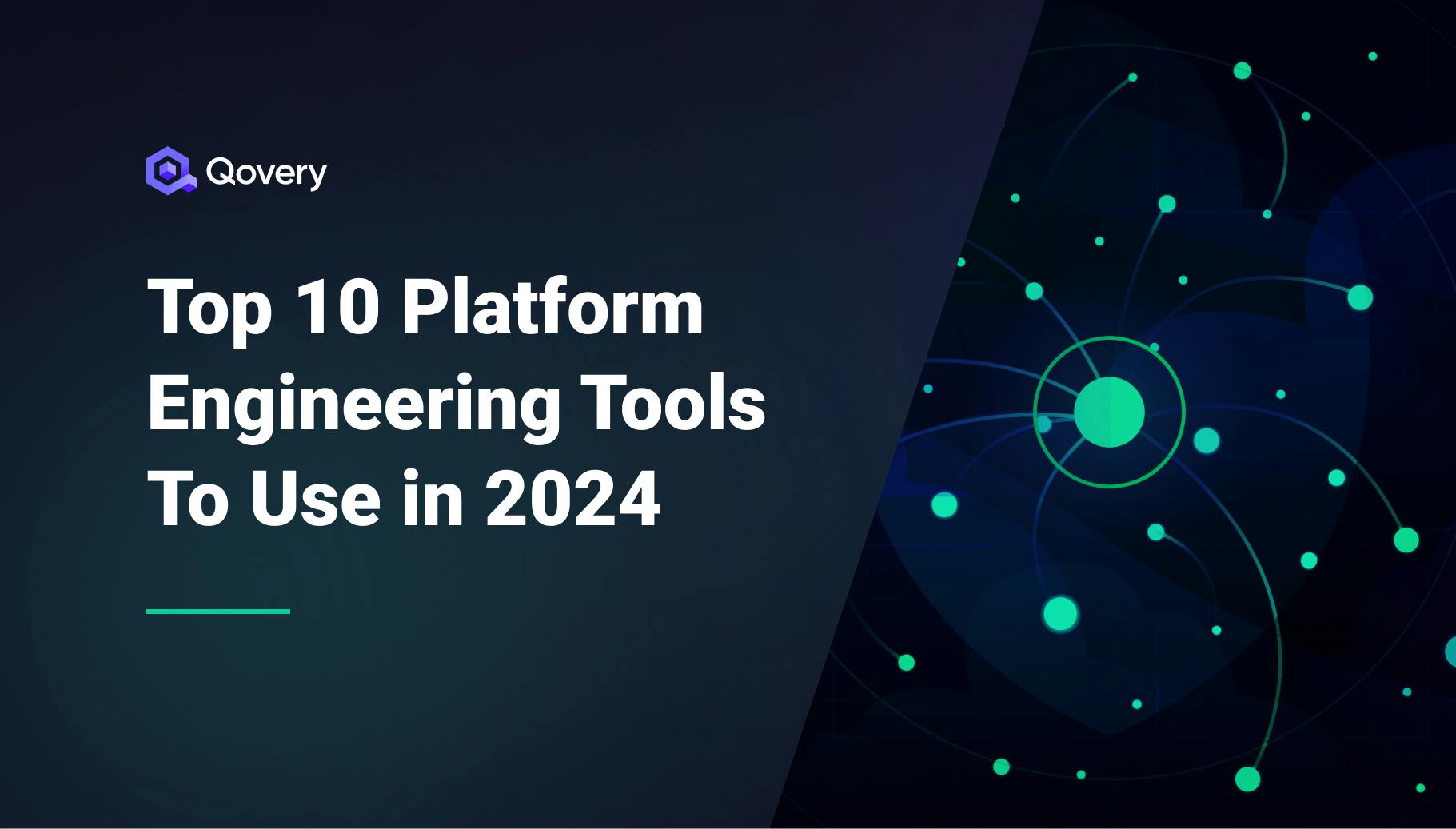7 Essential Factors When Choosing Platform Engineering Solution
The trend of Platform Engineering is now gaining momentum, which analysts and industry experts refer to as one of the most disruptive philosophies of the moment. But regardless of experts’ predictions and assumptions, what matters for organizations today is understanding what adopting an approach such as Platform Engineering actually entails, what a successful solution looks like, and how to adopt best practices for its implementation. That's what this article is about. A successful Platform Engineering tool will provide immense benefits to the organization. You will achieve rapid product releases, reduce operational complexity, scale applications through environment automation, and many more. However, an effective platform engineering tool must have certain traits to achieve the benefits mentioned above. Today, we will discuss the 7 key factors necessary for a great platform engineering tool. Incorporating these 7 components will ensure that your platform engineering tool will serve its purpose.

Morgan Perry
November 10, 2022 · 6 min read.jpg?ixlib=gatsbyFP&auto=compress%2Cformat&fit=max)
Let's quickly remind what Platform Engineering is:
Platform Engineering is the process of enabling software engineering teams so they can autonomously perform end-to-end operations of the application life cycle in a cloud environment. Platform Engineers develop an integrated product that provides self-service capabilities to developers. The self-service platform hides all these complexities, whether it is infrastructure provisioning, code pipelines, monitoring, or container management. It provides developers with all the necessities of the application's entire life cycle. Platform Engineering is not just necessary tooling but a combination of tools, workflows, and processes. We wrote a detailed article on Platform engineering explaining the key characteristics, the main benefits, and differences between DevOps and SRE (to read here).
Let's walk through one of the most important criteria to keep in mind when choosing a Platform Engineering solution.
#Security & Compliance Must Be Built-in
Security and compliance are inevitable for any platform engineering tool; the more secure and compliant the tool will be, the less convenient it will be for the developers. When platform engineers develop the tool, they must design and implement the system to meet all the security standards and security processes that can be applied across all teams. The focus of platform engineers is developing the self-service tool. Product developers, however, focus solely on the product to be marketed. They have the typical pressure from marketing and sales teams to push product updates as quickly as possible. Consider a scenario where the product development team compromises on a security measure to release the product for an important demo. This is a common challenge faced by many organizations embracing platform engineering.
The solution consists of two critical measures:
- You must ensure that the product development team fully understands the security and compliance aspects implemented in the tool by platform engineers. It is quite possible that a developer was simply unaware of a particular security checkpoint.
- You need to automate the process as much as possible. Ideally, the manual intervention should be minimum so that the tool enforces security and compliance and product development does not need to make any security decision; it should be automated.
Security is a hard requirement, and if you compromise on it, it will lead to poor service and expose your product to security risks.
#No Vendor Lock-In
Today’s vendor lock-in is tomorrow’s technical debt. The tool’s implementation must not be tied to a particular vendor only. For example, if your solution is specific to AWS, then moving to Azure will need modifications to the tool, which will incur more costs and money. Implementing the solution specific to a vendor will accumulate technical debt in your solution. The tool must not be tied to one particular vendor; instead, it should be developed so that it can easily integrate with more vendors in the future.
#Extendable & Flexible
The tool should be extendable and flexible. It should support different types of workloads. Simply providing a layer of abstraction over complex tools like Kubernetes or AWS might not suffice. Open-source tooling will be the right fit for that. Ideally, the tool should be able to support diverse product development. Note that the platform must be designed and developed keeping in view future needs and trends. As technology evolves rapidly, building a tool solely based on current requirements will not be extendable.
#Powerful Templates and Configurable Blocks
Skilled resources are in high demand in the cloud industry, and not every organization can afford and find the right resources. The tool must have powerful templates and configurable blocks to set up a product’s end-to-end processes quickly. The purpose is to empower and facilitate developers to set up any workflow, infrastructure, and CI/CD pipeline independently. These pre-configured implementation templates would serve the following purpose:
- To allow developers to self-service the handling of different workloads and cloud types
- To allow developers to self-service the provisioning of different cloud infrastructure components from different cloud vendors
- To facilitate developers to self-service the implementation of a workflow (e.g., CI/CD workflow)
While the tool would delight the developers because it will reduce the operational complexity and bring autonomy to them, platform engineers must also ensure that best practices and implementation requirements are met.
#Enable Quick Iteration
The tool should be composed of self-service portals that enable product teams to become autonomous and facilitate rapid releases. This will reduce the overall bottlenecks in releasing the code to production in a reliable manner. When developers deploy the code to production without depending on the Ops team, they can deliver product updates faster and will be able to incorporate feedback from the QA engineers, UI developers, UX designers, etc.
#On-demand & Preview Environments as Key Features
A good platform engineering tool will have strong support for on-demand and preview environments. Using on-demand environments, developers can spin up ephemeral environments, which can be a replica of staging/production. The process of launching the environment should not be complex and must be developer friendly. Another feature that must be part of the tool is preview environments. Preview environments automatically provision an isolated- test environment as soon as you create a code pull request. It allows you to test your code branch changes in that ad-hoc but fully functional isolated environment. After you have completed your testing and you merge your branch in the master, the ephemeral environment will be automatically removed.
#Observability & Monitoring
The tool must be equipped with strong monitoring and observability features. Through proactive monitoring, you can keep an eye on all system components. A good monitoring system will:
- Have valuable dashboards showing meaningful analytics
- Generate alerts based on different metrics threshold
- Generate suggestions based on the diagnostics data collected from various parts of the application
At the very least, the solution should support integration with the industry’s top monitoring solutions like Datadog, Newrelic, or Grafana to name a few.
#Wrapping Up
Platform engineering provides self-service capabilities with automated infrastructure operations, resulting in increased developer productivity. When implementing a platform engineering tool, note that no single solution fits all needs. You need to understand organization-specific needs and implement a tailor-made tool optimized for that particular organization's requirements. Qovery is an example of such a tool that provides you with the right platform for automatic environment provisioning and a self-service developer portal.
#How Qovery offers the best Platform Engineering tool option
Now that you know the essential components when it comes to choosing the right Platform Engineering tool, you must think about how to start and take advantage of all the promises of Platform Engineering. This is where Qovery comes in. Qovery offers everything you need to build your own platform, providing a seamless deployment experience to your developers.
Qovery is equipped with powerful features like Cloning Environments or Preview Environments, which allow developers to quickly provision a working deployment environment based on staging or production environment. You can utilize your existing tools and technologies, like Terraform, Kubernetes, Helm, Docker, AWS, etc., with Qovery. Not only that, Qovery has strong integration with the full DevOps toolchain used for CI/CD, monitoring, etc. Qovery makes developers autonomous and efficient with their software release processes making their life easier.
To experience first-hand the power of Qovery's On-demand environments, start a 14-day free trial.
Sign–up here - no credit card required!
Your Favorite DevOps Automation Platform
Qovery is a DevOps Automation Platform Helping 200+ Organizations To Ship Faster and Eliminate DevOps Hiring Needs
Try it out now!

Your Favorite DevOps Automation Platform
Qovery is a DevOps Automation Platform Helping 200+ Organizations To Ship Faster and Eliminate DevOps Hiring Needs
Try it out now!


.jpg?ixlib=gatsbyFP&auto=compress%2Cformat&fit=max)